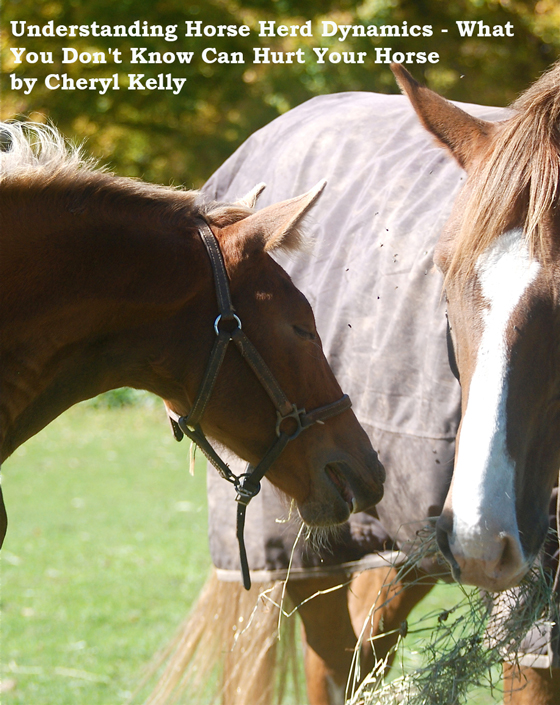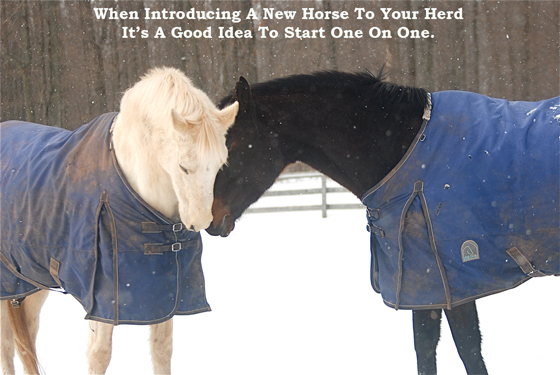Understanding Horse Herd Dynamics - What You Don't Know Can Hurt Your Horse
by Cheryl Kelly

The word 'bully' is defined by Webster and Wikipedia as: "Quarrelsome, overbearing, habitually badgering and intimidating." When I think of bullying What comes to my mind is the expression, “Sticks & Stones may break my bones but names will never hurt me.”
So, what is the definition of bullying when it occurs between horses?
Hierarchy? Dominance? Survival?
No visible signs of “sticks or stones” are seen; just an innate instinct to survive causing the dissention between horses and humans. The hierarchical structure is based on the self-confidence of each horse. In every society there exists in a pecking order where dominance always plays a key role.
In the wild stallions will engage in a ritual of posturing; where in two males will confront each other with eye to eye contact, heads pressed together and their tails highly arched. If, there is no retreat of the lesser; a fierce confrontation between the two can occur. Combative lunging with kicking, biting and in a more severe instance, death may occur from any injuries sustained. So, this activity is not seen as bullying, but one of control, and leadership over the harem. The dominant stallion's role is to protect his harem at all times with whatever it takes
The technique by which the stallion controls his mares is straightforward. Herding into a single group by posturing from the rear with an occasional bite if they fail to keep up with the pace he requires. This behavior is often seen as an unwarranted, unjust, and harassing manner or just territorial in a nature habitat.
In each harem there is one lead mare that also guides the herd. There is usually no resistance between her and those who follow her willingly. She chooses where and when they will eat, drink, and/or move on to “greener pastures” for food and security. Her leadership enables the herd's survival. Very few squabbles occur over lead dominance. In the wild the herd can then live in harmony as a group that can support one another, and their offspring. Therefore, the herd establishs a “circle of trust” under the guidance of her knowledge and experience.
So, how does the domestic horse establish that same “circle of trust”?
Domestic horses are also ruled by a hierarchical structure made up by a lead horse and a pecking order is established, and has to be constantly confirmed. Pinned ears, biting, kicking and, sometimes more severe behaviors are exhibited if challenges occur to try to take the alpha position. Once the order is established from alpha down to the least dominate. The horses know their place.
A horse that might be timid and might be bullied into submissiveness; this would be no different in a small group, as opposed to a herd of many. Sometimes the lesser might not fare as well. At what point does dominance vs bulling determine the order of the herd. Other factors such as inadequate nutrition, hydration and injury among the underdogs, might come into play in the day to day existence when constant fighting amongst the herd exists.
Understanding and evaluating equine behavior as owners/caregivers it is important to provide adequate space, food, water and shelter to ensure a healthy environment to avoid confrontation. Being mindful of what goes on concerning the survival instinct in a domestic herd can be the key to a safe and emotionally comfortable, happy horse. As history tells us, the existences for survival depends on the premise 'survival of the fittist'. Even after millions of years this fight for survival is still an inherited trait.
Let this not be the case in our domestication of our wonderful companions...



